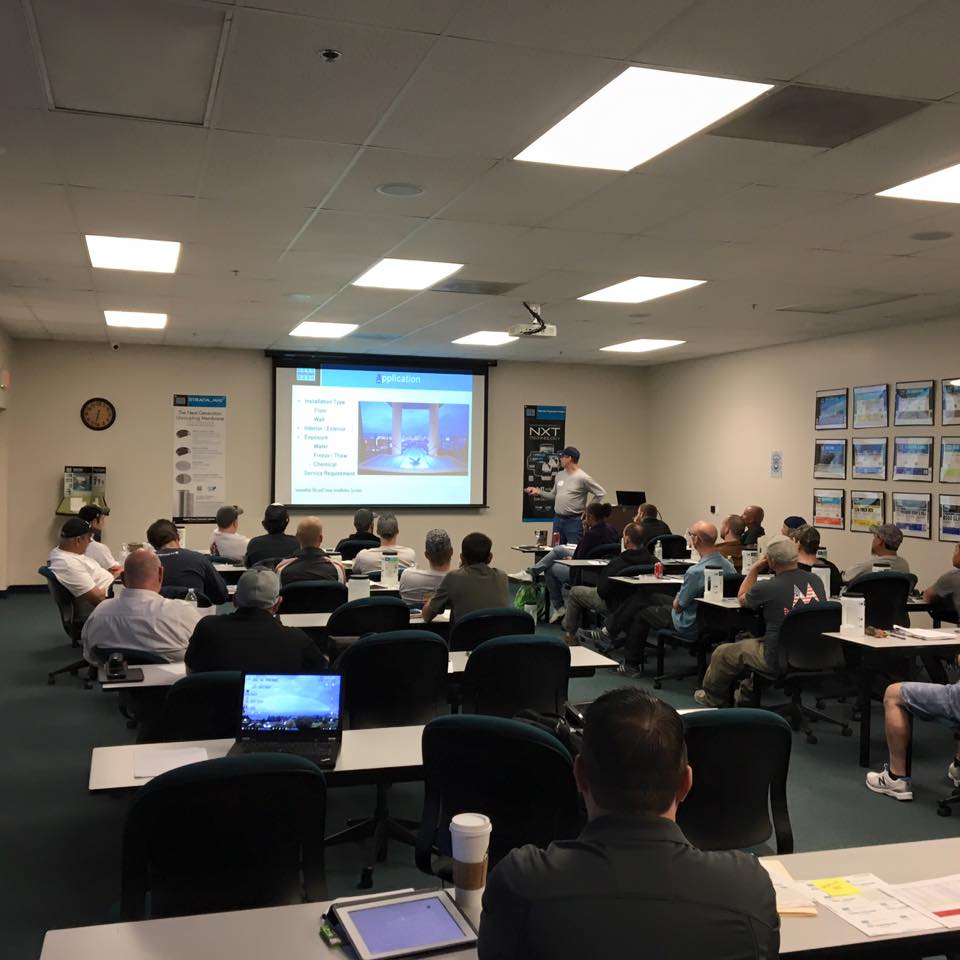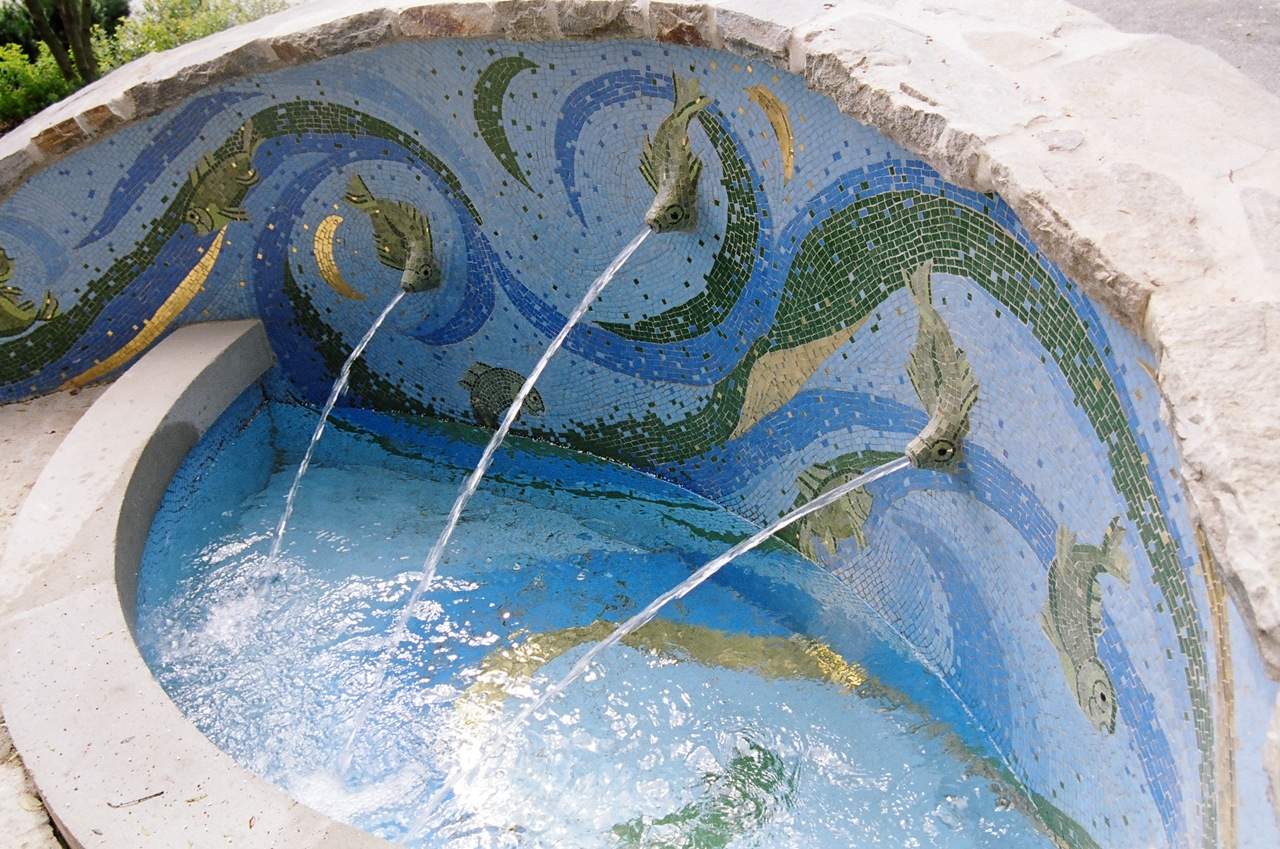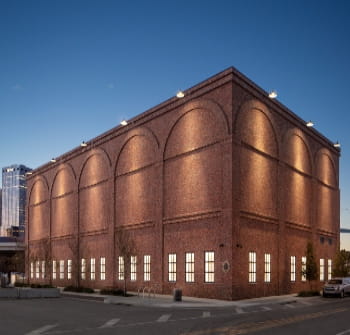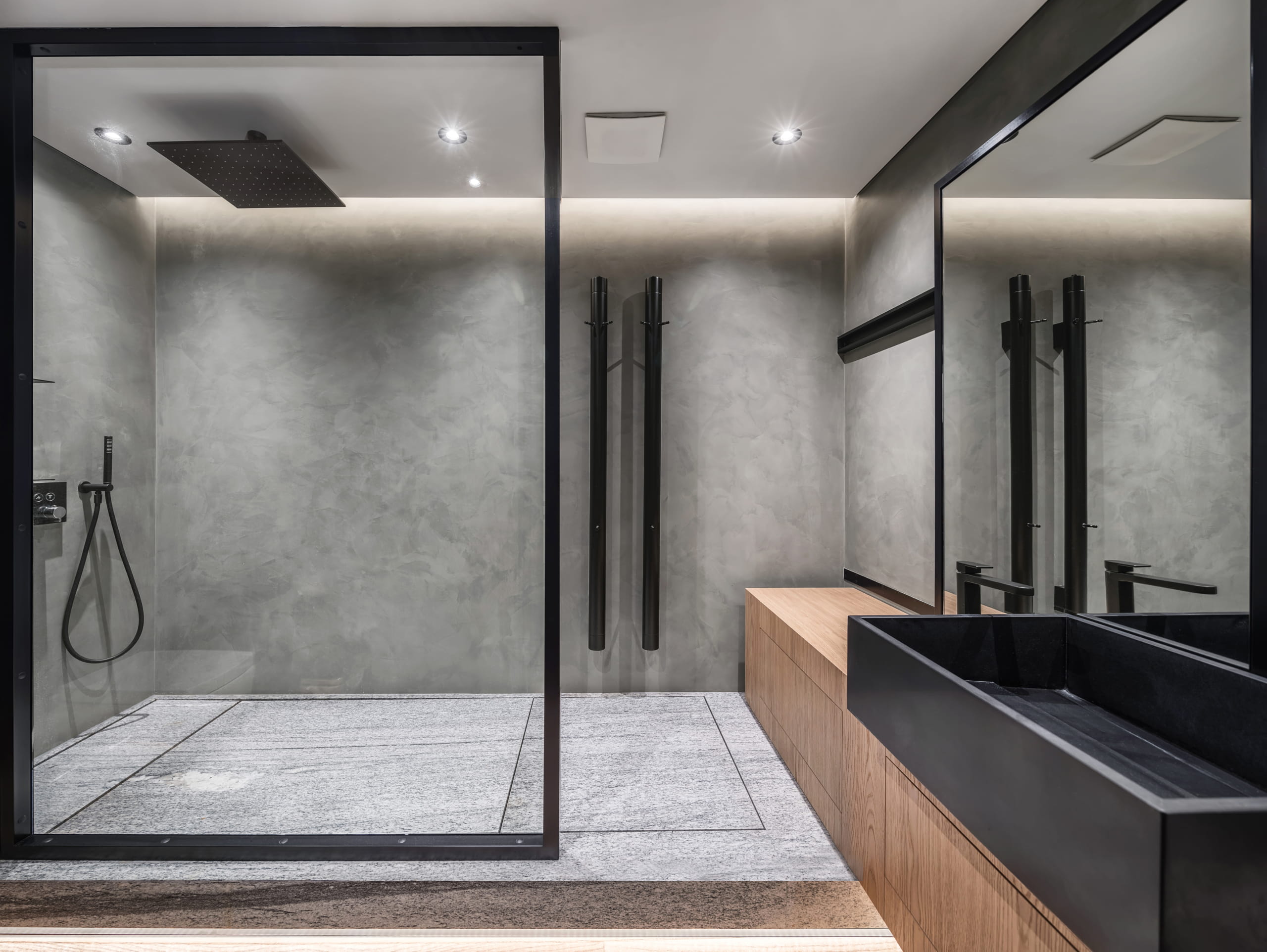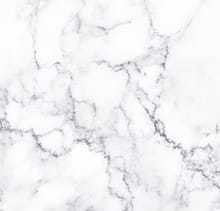As an approved international Passport provider for the AIA Continuing Education System (CES), LATICRETE International Inc. is authorized to offer these seminars anywhere in the world. In these courses, you will learn:
- Current industry standards and challenges encountered in today's construction.
- An understanding of the many choices of substrates and finishes — and how these choices affect installation requirements.
- How to avoid the most common and costly installation problems.
- A look at unique tools designed to streamline the specification process.
Download our AIA course flyer here or read more below. If you are interested in IDCEC courses, send us a request at seminars@laticrete.com.
AIA Seminar Highlights
Programs & Descriptions
The following is a complete list of programs that are registered and approved for presentations by AIA for our provider passport. Click on the links to view the detailed course description for each.
- AIA-01 - Water as Design Medium - Incorporating Water into Your Designs: What are the key design and specification issues to consider when designing areas subject to water exposure? You'll learn the different options for surface preparation, waterproofing, setting materials & grouts, as well as how you can benefit from new technologies. Learn how to achieve a successful installation of tile and stone in wet areas, while comparing the cost and labor differences for the various installation methods presented.
- AIA-02 - Ceramic Tile and Stone Troubleshooting - Do you know what some of the most common problems are when installing tile and stone? Learn what causes these problems, how to correct them, and most importantly, how to help prevent these problems from even happening.
- AIA-03 - Tile and Stone Installation Materials and Methods - Avoid problems on the job site by selecting the right tile and stone materials and installation methods the first time. You will learn how to specify the correct tile and stone materials for various substrates, indoor/outdoor applications, and the corresponding installation technique to help ensure long-lasting results.
- AIA-04 - Direct Adhered Facade Systems - Is it really that much harder to install tile and stone on vertical surfaces? Here’s a hint: yes. This course will teach you about how to select the proper adhesives and mortars to ensure a safe vertical installation, the most common problems associated with façade installations, and where to access key resources to achieve an iconic façade design.
- AIA-05 - Designing Installations Using Marble and Granite - Do you know how to identify the differences between marble and granite, and the challenges with installing each surface? Dig deep into how each type of stone is quarried , the proper substrates required, the physical differences between marble and granite, and the considerations when installing each.
- AIA-07 - Sustainability in Tile and Stone Installations - Learn how you can specify a healthy building environment while utilizing tile and stone, and how these materials fit into green building design. You’ll also find out how to select proper installation methods to help promote a safe and healthy job site.
- AIA-08 – Grout for Tile and Stone - Cementitious or epoxy grout? Sanded or unsanded grout? Which is the right choice for your tile job? Learn how to specify the proper grout for your tile and stone project, the most common problems during install, and how proper maintenance can lead to a long-lasting installation.
- AIA-09 - Surface Preparation - The keys to a long-lasting and beautiful installation starts long before the first tile is set. Learn the proper preparation methods, acceptable substrates, and the minimum standards required for a successful tile and stone installation.
- AIA-12 – Restoring a concrete slab to baseline – Leveling and Resurfacing - When do you need a self-leveler vs. a skim coat, and how do you ensure your floor is correctly prepared to install the finished product? This advanced seminar will discuss the major benefits to utilizing a low alkali cement self-leveling product to restore a slab to baseline. Overall design and specification will be discussed to aid you in determining when floor leveling is necessary on new or existing slabs. Further, the presentation will compare several methods of application for these cements including barrel-mixing and pumps.
- AIA-13 – Designing Installation Systems and Reduce Thickness Porcelain Tiles - With its reduced weight and larger sizes, reduced thickness porcelain tile provides a new, almost seam-less design element in a variety of settings. Learn the best areas to use these tiles in new construction and renovations, the special tools required for proper handling and installation, and how reduced thickness porcelain tiles are contributing to green construction methods.
- AIA-14 - Polished Concrete Design for LEED and CHPS Projects - Polished concrete surfaces are durable, low maintenance, and great for high-traffic areas. In this course, you’ll learn about advances in polishing equipment and grinding techniques for old and new surfaces, installation materials and methods, and how polished concrete surfaces are contributing to LEED certification (Leadership in Energy and Environmental Design) and CHPS (Collaborative for High Performance Schools) projects.
- AIA-15 - Concrete Basics - Whether you’re a layman or a seasoned pro, this course will teach you something about the world’s most common building material – concrete. Start with the basics and get helpful tips for proper concrete installations.
- AIA-16 - Concrete Problems and Solutions - Concrete is not without problems. This presentation will cover some of the most common issues with concrete and their root causes. See visual examples of concrete installs gone wrong, and how they could have been prevented. Even if you’re a seasoned pro, you may learn a few tips.
- AIA-17 - Misconception about Chemical Hardeners - Why would you want to use a chemical hardener, and what benefits can they provide? We’ll break down some common myths, present the science behind these hardeners, and teach you what the densification process can add to concrete surfaces.
- AIA-19 - TCNA Handbook Updates for Architects - Ceramic tile, glass and stone constitute several of the most environmentally friendly and sustainable finish materials you can utilize for green building design. This course is intended to help design professionals properly use the Tile Council of North America (TCNA) Handbook and specify tile, glass and stone installations.
- AIA-20 – Enhanced Performance Installation Systems for Thin Adhered Masonry Veneer - Installing veneers has evolved past traditional lath and scratch. Changes in building codes and an increased focus on energy efficiency has led to a new generation of substrates, air and water barriers, and mortars for thin adhered masonry veneer. In this course, you will gain an overall understanding of these new standards in materials, how modern installation methods can reduce time and labor costs on the job, and how energy efficient building envelope designs are driving construction trends.
- AIA-22 – Innovative Decorative Toppings - Stay ahead of your competition and maximize your profits by learning about the latest trends in decorative concrete toppings and overlay technologies. Learn how to achieve faster installations via proper project planning and product selection and find out how greener building trends are leading to the specification of decorative concrete as a sustainable solution.
- AIA-23 – Finishing Concrete With Self Leveling Cement - Imperfections in a concrete slab can translate to a poor installation of the finished flooring. Utilizing self-leveling cement can help you achieve the desired tolerances for flatness and moisture resulting in a better final product. This course will also breakdown the costs and labor impacts of using a self-leveling cement versus more traditional power troweling.
- AIA-25 - Barrier Free Shower Design and Techniques - Barrier free shower systems, also known as curbless or walk-in showers, unlock a new element for designers, with the added benefit of increasing accessibility for those with disabilities. Before starting your next project, educate yourself on the new, lightweight materials available, code requirements for a barrier free installation, and proper installation methods to help reduce mold and mildew growth.
- AIA-26 - Specifying Polyaspartic Flooring Coatings for Sustainability - When should you use a Polyaspartic coating? And what are the differences between epoxy, urethane, and MMA coatings? This course will help you understand the background and chemistry of the different coatings available, when and where you should specify such coatings, and the sustainable benefits of Polyaspartic coatings.
- AIA-31 - Installing Tile in High Humidity, Heat and Floor Zones - Environmental conditions are some of the biggest issues to take into consideration when installing tile and stone. Be sure to set yourself up for success by understanding how high humidity, heat, and flood prone areas directly impact installations, and learn the proper methods to help mitigate these problems and ensure your installations will hold up to the elements.
- AIA-32 - Exterior Wall Systems for Adhered Veneers - Do you know how recent changes to the building code have impacted the way a building’s envelope is constructed? Different classes of air barriers, drainage planes, continuous insulation… understanding each of these elements and how they interact is crucial. This course will cover how air and moisture move in and out of a building, how to specify the correct air barrier for a substrate, the role of drainage planes, and how all these elements work together to increase a building’s energy efficiency. Detailed drawings will help illustrate different installation options.
- AIA-33 - Large Tiles Demand Flat Substrates - How much of a difference can 1/8” make? Well, if you’re installing large format tiles or gauged porcelain tiles and panels, it can mean the difference between a successful installation or having to return to the job and replacing an entire floor. Get expert advice on how to avoid the pitfalls of improper substrate preparation, discover solutions for dealing with uneven substrates and creating suitable flat surfaces, and learn what tolerances are acceptable for these increasingly popular flooring materials.

